
ADHD & Motor Control Assessment Tool
This assessment helps identify potential motor control challenges commonly associated with ADHD. Please answer honestly based on your experiences or observations.
Your Assessment Results
Ever wondered why some kids with ADHD seem clumsy or have trouble tying their shoes? It’s not just a coincidence-there’s a real link between poor muscle control and the way the brain manages attention, impulse control, and movement. In this article we’ll unpack what muscle control actually means, why it matters for people with ADHD, and what you can do if you notice the signs.
What Is Poor Muscle Control?
When we talk about muscle control we’re really talking about the brain’s ability to coordinate muscles for smooth, purposeful movement. This includes everything from fine‑motor tasks like writing to gross‑motor skills such as running. In scientific terms the phrase often shows up as "motor control deficits" or "impaired proprioception."
Motor control deficits refer to difficulties in planning, initiating, or executing coordinated movements, often due to atypical brain signaling can appear as frequent tripping, spilling drinks, or struggling with handwriting.
ADHD in a Nutshell
Attention Deficit Hyperactivity Disorder (ADHD) is a neurodevelopmental disorder characterized by persistent patterns of inattention, hyperactivity, and impulsivity that interfere with daily life affects roughly 9% of children and 4% of adults worldwide. While the classic picture focuses on mind‑wandering and fidgeting, many clinicians now recognize that motor challenges often ride along.
Why the Brain Connects the Two
The brain regions that regulate attention and those that fine‑tune movement overlap a lot. Three key players are the basal ganglia, the cerebellum, and the dopamine system.
- Basal ganglia a group of nuclei that help select and initiate actions, heavily involved in habit formation and impulse control
- Cerebellum the part of the brain that coordinates timing, precision, and balance in movement
- Dopamine a neurotransmitter that modulates reward, motivation, and motor pathways; its dysregulation is a hallmark of ADHD
Neuroimaging studies from 2023‑2024 show reduced activation in the cerebellum of children with ADHD during motor tasks, and abnormal dopamine signaling in the basal ganglia that correlates with both inattentive and clumsy behaviors. In short, when the brain’s “control center” isn’t firing correctly, it can manifest as both attention problems and shaky hands.
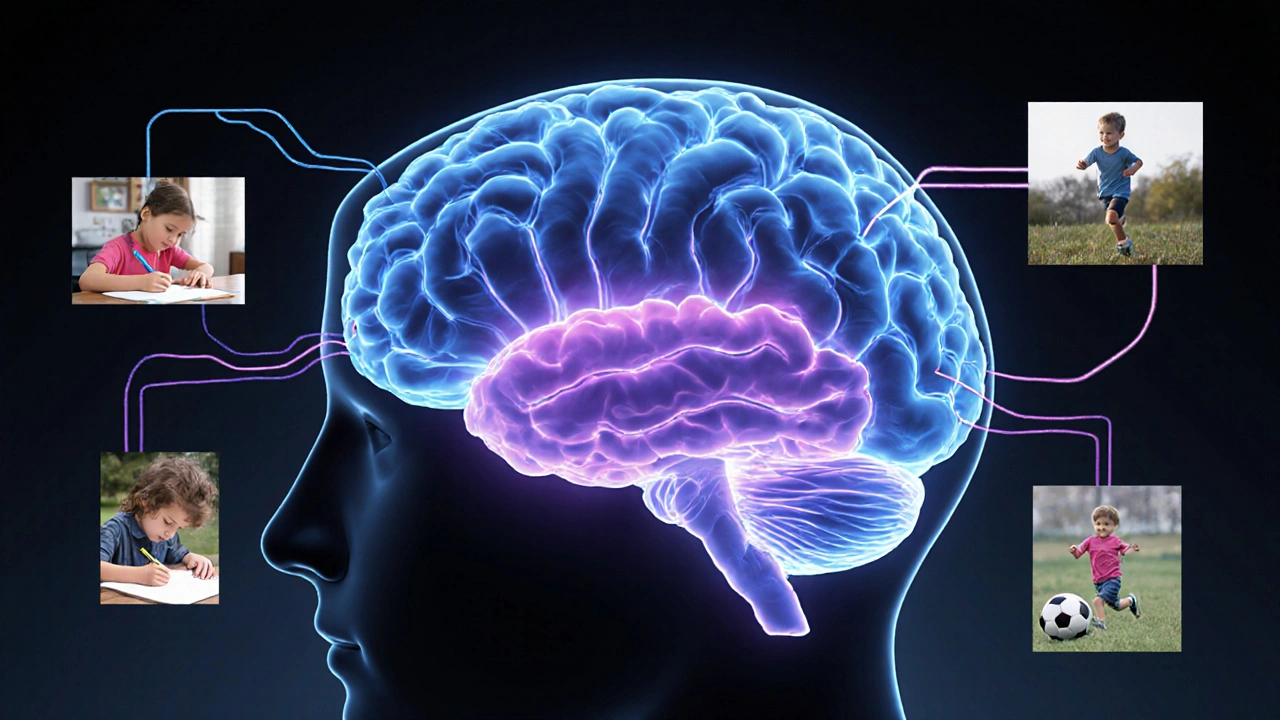
How It Looks in Real Life
Parents and teachers often describe a pattern that looks like this:
- Difficulty learning to tie shoes or button shirts.
- Frequent dropping of objects, especially during classroom activities.
- Clumsiness on playground equipment that seems out of proportion to age.
- Complaints of “feeling wobbly” when trying to sit still for long periods.
These observations match a condition called Developmental Coordination Disorder (DCD) also known as dyspraxia, a separate diagnosis that focuses on motor skill impairment. While DCD can exist without ADHD, up to 50% of children diagnosed with ADHD also meet criteria for DCD, suggesting an overlapping neurodevelopmental profile.
Screening and Assessment
If you suspect a link, a thorough evaluation is the next step. Here’s a typical pathway:
- Medical history & questionnaire: Clinicians use tools like the Conners‑3 for ADHD symptoms and the Movement ABC-2 for motor proficiency.
- Observational assessment: An occupational therapist watches the child perform tasks such as catching a ball or copying shapes.
- Standardized testing: The Bruininks‑Oseretsky Test of Motor Proficiency (BOT‑2) offers quantitative scores.
- Neuropsychological testing: Evaluates executive function, working memory, and processing speed, which are often intertwined with motor planning.
These data points help differentiate pure ADHD from ADHD+DCD, guiding treatment choices.
Interventions That Target Both Mind and Muscles
Good news: many strategies improve attention and motor control at the same time.
1. Occupational Therapy (OT)
Occupational therapy focuses on enhancing daily living skills through sensorimotor activities, visual‑motor integration, and adaptive equipment is often the first line for motor‑related challenges. An OT may prescribe:
- Fine‑motor drills (e.g., bead strings, pencil grips).
- Gross‑motor games that boost balance and coordination.
- Sensory diet plans to regulate proprioceptive input.
2. Physical Activity & Structured Play
Regular aerobic exercise raises dopamine levels, which can lessen both hyperactivity and clumsiness. Activities with clear rhythmic patterns-like swimming, martial arts, or dance-train the cerebellum’s timing circuits.
3. Medication Management
Stimulant medications (e.g., methylphenidate) primarily target attention, but many parents report secondary benefits like smoother handwriting and fewer accidents. The effect varies; non‑stimulant options like atomoxetine may help when stimulants aggravate motor jitter.
4. Cognitive‑Motor Integration Programs
Programs such as “PlayFit” or “NeuroGym” combine mental tasks (e.g., memorizing sequences) with physical movement, directly exercising brain‑body loops. Early research shows modest gains in both reaction time and balance after 8‑week programs.
Common Pitfalls to Avoid
When dealing with ADHD and motor issues, it’s easy to fall into traps that hinder progress.
- Assuming the problem is “just laziness.” Motor deficits are neurological, not a lack of effort.
- Skipping the OT assessment. Even if medication improves focus, the child may still struggle with everyday tasks.
- Over‑prescribing caffeine or sugary drinks. Short‑term alertness spikes can worsen fine‑motor tremor.
- Neglecting sleep. Poor sleep amplifies both inattention and coordination problems.
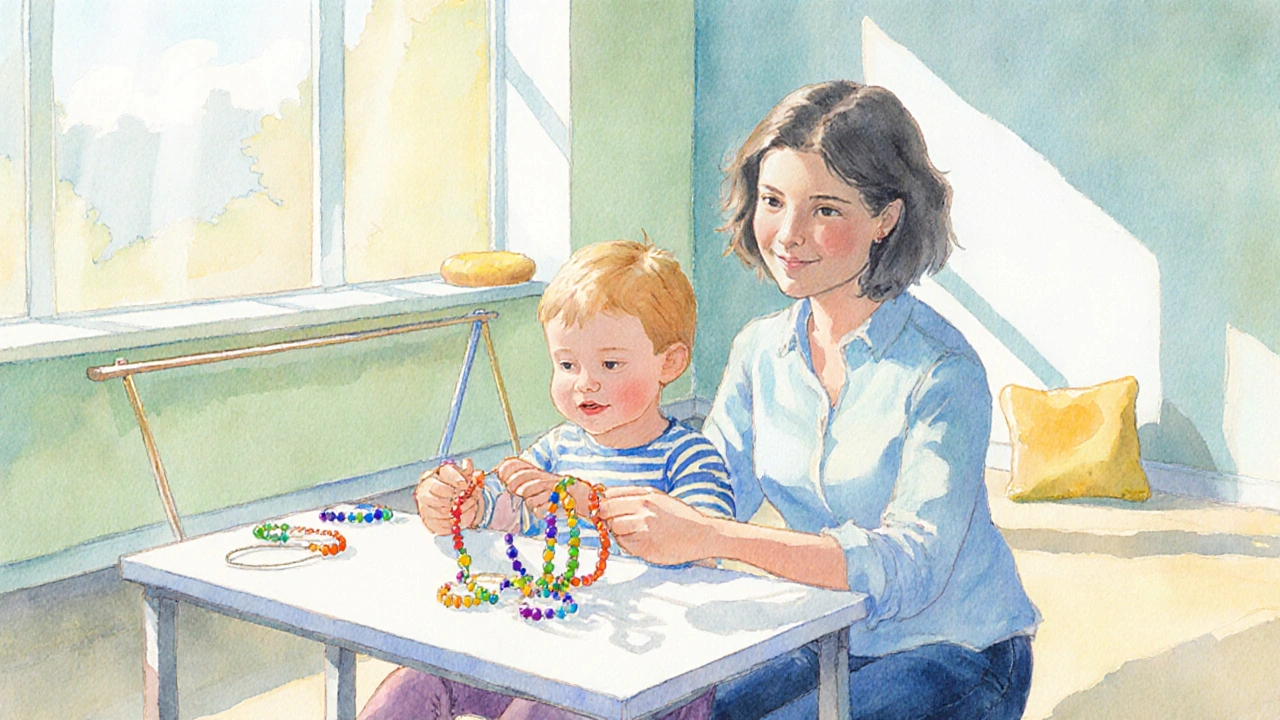
Putting It All Together: A Practical Checklist
| Step | Action | Why It Helps |
|---|---|---|
| 1 | Observe daily motor struggles (e.g., tying shoes, handwriting). | Identifies patterns that may signal DCD alongside ADHD. |
| 2 | Schedule a combined ADHD and OT evaluation. | Provides a unified treatment plan targeting both attention and coordination. |
| 3 | Introduce a structured physical activity 3‑4 times a week. | Boosts dopamine, improves cerebellar timing, and reduces hyperactivity. |
| 4 | Review medication effects on motor side‑effects. | Ensures the chosen drug supports, rather than hinders, muscle control. |
| 5 | Implement nightly sleep routine (8‑10hrs for kids). | Restores executive function and motor coordination. |
Future Directions in Research
Scientists are now using high‑density EEG and functional MRI to map the exact pathways that link attention circuits with motor output. A 2025 longitudinal study followed 300 children with ADHD from age 5 to 12 and found that early OT intervention reduced the likelihood of developing severe DCD by 30%.
Another promising avenue is neurofeedback that trains the brain to stabilize beta‑wave activity in the basal ganglia. Early pilots report improved handwriting speed and reduced impulsivity after 12 sessions.
Bottom Line
If you’ve noticed clumsy behavior in a child or adult with ADHD, don’t write it off as mere “bad luck.” Poor muscle control is often a neurobiological side‑effect of the same brain systems that govern attention. Recognizing the link opens doors to targeted therapies-occupational therapy, focused exercise, and thoughtful medication management-that can smooth out both mind and body.
Frequently Asked Questions
Can ADHD cause clumsiness even without a formal DCD diagnosis?
Yes. Many people with ADHD show subtle motor issues-like frequent dropping of objects or poor handwriting-without meeting full DCD criteria. These motor slips stem from overlapping brain pathways that affect both attention and movement.
Does stimulant medication worsen muscle control?
Most stimulants improve focus and can actually sharpen fine‑motor tasks. However, high doses may cause tremors or jitteriness in some individuals. It’s important to monitor motor side‑effects and adjust the dose with a physician.
What age is best to start occupational therapy for motor issues?
Early intervention is key. Professionals often begin OT assessments as early as preschool (3‑4years) once motor delays become evident. Early work maximizes neural plasticity and can reduce later academic struggles.
Are there any home exercises that help improve both attention and coordination?
Yes. Simple activities like hopping on one foot while reciting the alphabet, or using a ball to practice timed throws, engage the cerebellum and reinforce dopamine pathways. Consistency (10‑15minutes daily) yields noticeable gains.
How can teachers support students with ADHD‑related motor challenges?
Teachers can offer adaptive tools (e.g., pencil grips, slant boards), allow extra time for fine‑motor tasks, and incorporate movement breaks. Pairing instructions with visual cues also helps the brain integrate motor planning with attention.

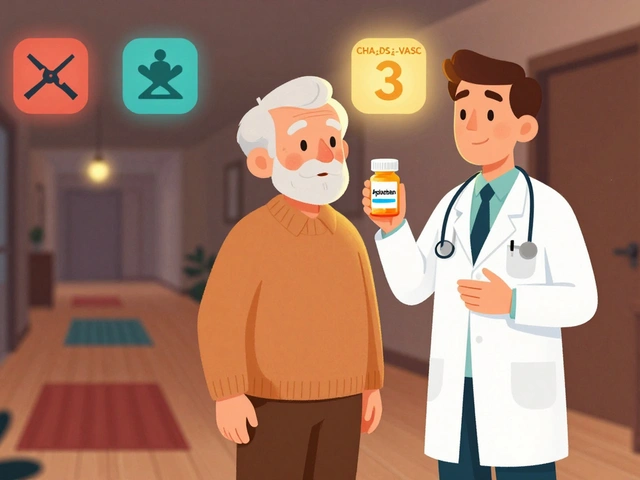

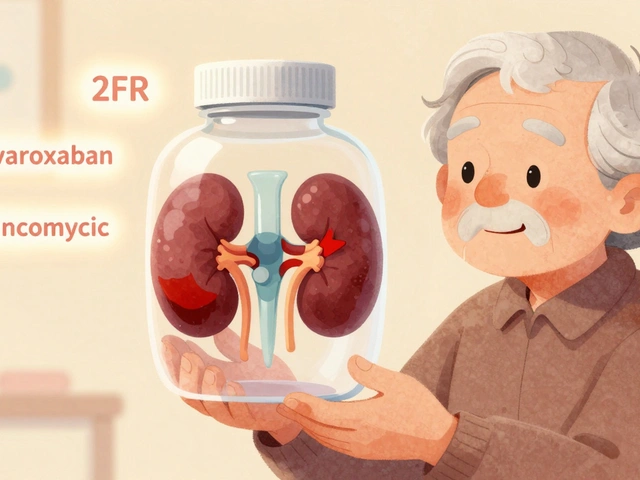
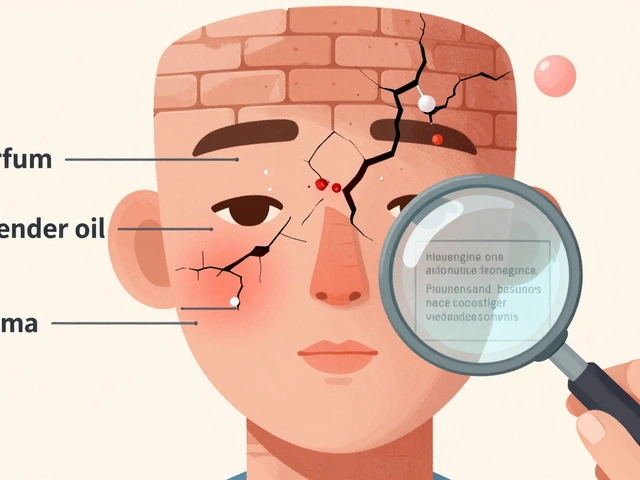

20 Comments
Yo, this article really hits the spot! Understanding how motor control ties into ADHD can change the game for a lot of folks 😊👍
Interesting perspective. In many cultures, fine motor challenges are often overlooked when diagnosing ADHD, yet they can be a key indicator of underlying neurodevelopmental differences.
Of course the pharmaceutical industry wants us to ignore motor control issues because it keeps the market for stimulants alive. They’re hiding the real cause behind a veil of "behavioral" labels.
i dont think this is as big of a deal as some ppl make it out to be. motor skills are just one piece of the puzzle and you cant blame everything on adhd.
Wow, what a thorough breakdown, the way motor coordination intertwines with attentional networks is absolutely fascinating, and it really underscores how multi‑faceted ADHD truly is, don’t you think?
Meh, just another read.
✧·゚✧ The link between motor planning and executive function is something I've been pondering. When someone struggles with tying shoes, it might reflect a deeper difficulty in sequencing tasks. 🧠✨ This could help clinicians tailor interventions more precisely.
Sure, motor deficits matter, but let’s not forget the neurochemical cascade. Dopamine dysregulation can impair both attention and fine‑motor precision. So, the symptom set is more than the sum of its parts.
Hey everyone! This info is golden – if you know you’ve got clumsy moments, it might be worth getting a motor assessment. It could open doors to new strategies and help you feel less frustrated. Keep pushing forward! 🚀
Excellent article. The correlation between proprioceptive feedback and attentional control is well‑documented in peer‑reviewed literature. Readers should consider seeking a comprehensive assessment.
Honestly, this is just another Western construct trying to medicalize normal behavior. Our traditions have always valued physical coordination differently, and we don’t need some labelling hype.
Let me tell you a story – I once knew a brilliant architect who could sketch the most intricate designs, yet he constantly tripped over his own feet. He told me, "My mind is a whirlwind, but my body? It's a storm that never settles." That was the first time I realized that the chaos in the brain can manifest as clumsiness in the real world. It’s not just a quirky anecdote; it’s a symptom that many with ADHD hide behind a mask of competence. When you watch a child fumble with a pencil, you might brush it off as "just nervous", but underneath lies a neural wiring that struggles to synchronize motor commands with attention. Researchers have shown that the cerebellum, the brain's coordination hub, often under‑fires in ADHD, leading to those everyday mishaps. So when you see someone dropping their coffee mid‑conversation, it isn’t merely bad luck – it’s a physiological echo of their attentional hurdles. I’ve also heard therapists talk about the "motor‑cognitive loop", a feedback system that, when broken, can exacerbate impulsivity. Imagine trying to drive a car while the steering wheel keeps wobbling; that’s what it feels like for many adults with ADHD in their daily tasks. The beauty of this article is that it finally shines a light on this hidden struggle, offering hope that targeted motor training could alleviate some of the frustration. Picture a world where a simple balance exercise helps you focus better at work – it's not a fantasy, it’s emerging science. And let’s not forget the emotional toll: constant clumsiness can erode self‑esteem, reinforcing a negative cycle of anxiety and distraction. By acknowledging the motor component, we break that cycle and give people a tangible tool to improve. So, to all the skeptics out there, consider the evidence, listen to those personal narratives, and maybe, just maybe, you’ll understand why a slipped shoelace can feel like a monumental setback for someone navigating ADHD. In the end, it’s about compassion, science, and giving people the resources they deserve.
Cool data. Motor issues are just another piece of the ADHD puzzle.
Wow, groundbreaking stuff. Next they'll tell us that breathing works too. 🙄
Honestly, it’s high time we stop sugar‑coating ADHD as “just a personality quirk”. The motor deficits discussed here are real, measurable, and deserve proper treatment. Ignoring them only perpetuates stigma.
People often overlook the connection between proprioceptive feedback and executive functioning. When you can’t gauge the position of your limbs accurately, it’s almost impossible to maintain sustained attention on a task. This is why many with ADHD describe themselves as “all over the place”. The research cited in this post underscores the need for integrated therapeutic approaches that address both cognitive and motor domains. It’s not just about medication; it’s about holistic care that includes occupational therapy, physical training, and environmental modifications.
In recent scholarly discourse, the interrelationship between motoric proficiency and attentional dysregulation has been elucidated with considerable rigor. It is incumbent upon clinicians to incorporate comprehensive motor assessments within the diagnostic framework for attention‑deficit disorders.
The article presents a solid synthesis of current findings. However, it would benefit from a more granular analysis of the statistical significance reported in recent meta‑analyses.
Great read! Gotta admit, i think adding some quirky hand‑exercises could make a real diff for folks dealing with focus issues.
Nice summary, definitely worth sharing with anyone curious about the motor side of ADHD.